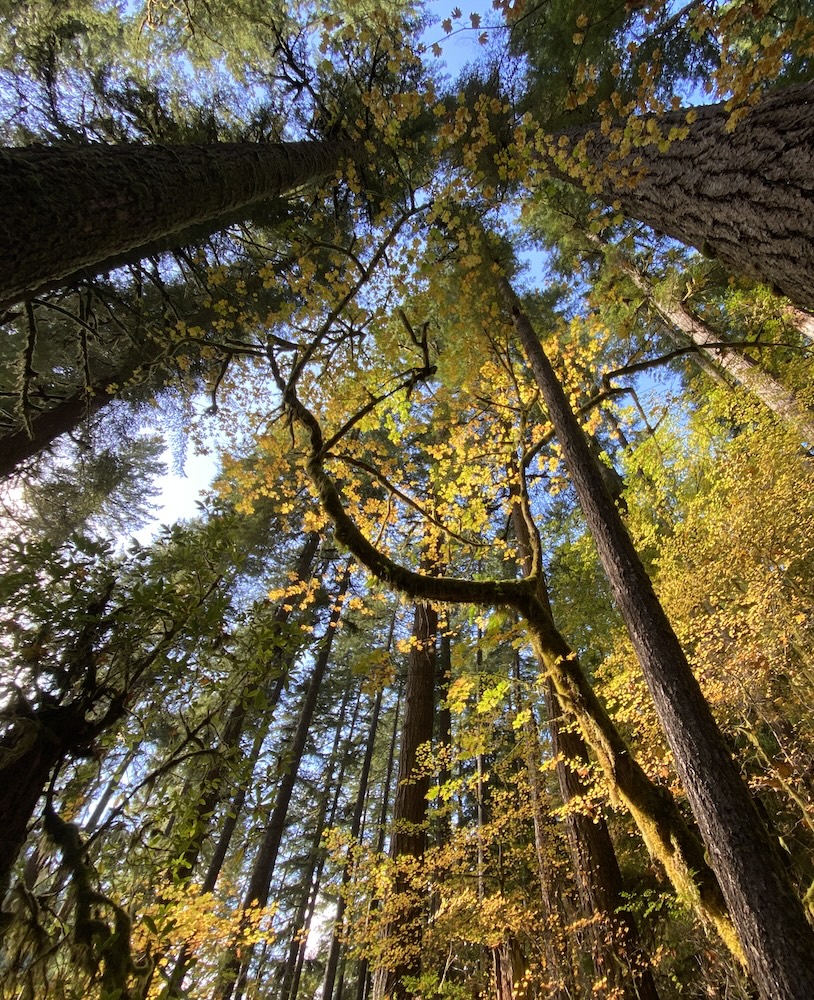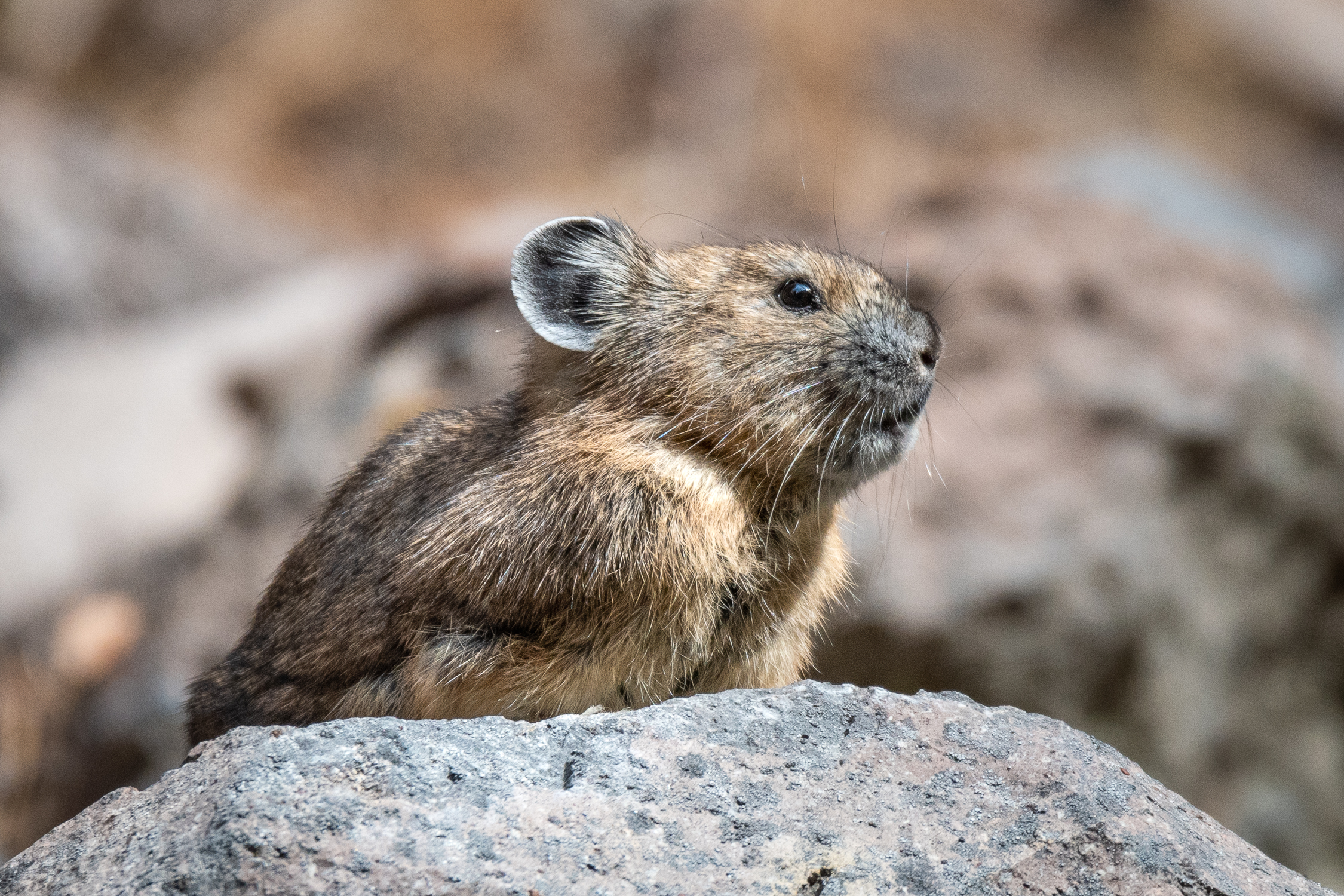| Scientific Name Ochotona princeps Size Weight: 5-6 ounces Length: 6-8 inches Habitat Alpine and subalpine areas Status Not listed federally; Listed as “sensitive” on Oregon’s Sensitive Species List |
About
Commonly referred to as the “rock rabbit,” American pikas are small mammals that inhabit rocky, cold alpine and subalpine areas, typically at elevations of 8,000 to 13,000 feet. Pikas are only found in the western part of North America, from British Columbia, Canada to New Mexico, United States. In Oregon, American pikas are celebrated residents of Crater Lake National Park, as well as other mountainous areas of central and eastern Oregon.
American pikas possess adaptations that allow them to exist in such cold places. Pikas’ thick, brown fur and round bodies help them conserve heat efficiently on treeless, wind-swept slopes. Their furry paws provide traction for them as they scramble across snow. Despite their nickname, “rock rabbit,” pikas’ appearance differs significantly from their cousin the rabbit. Pikas have comparably little, rounded ears, no tail, and are much smaller: with adults’ bodies about the size of a tennis ball, and babies not much larger than a walnut.
Pikas make their dens in rock piles and slides. They are territorial and defend their homes from predators, as well as other pikas. Pikas are vocal animals, and will use a sharp call or whistle to warn others of danger. When not defending themselves, pikas spend much of their time foraging for food; their diet is comprised of plants such as thistle, sedges, wildflowers, and grasses. Pikas store some of their food for winter in piles, referred to as “haystacks” or “haypiles.” While pikas themselves are difficult to spot, their distinctive haystacks can provide signs of their presence.
Pikas are diurnal, active during the day, and forage year-round. Typically, pikas mate about a month before the first snow melt, somewhere between April and July. During this time, males will use their call to attract females. Pikas give birth to two to four babies, and raise them for about four weeks. At this point, the babies leave the mother, though they will not be adult size for another two months, and the mother may mate again.
Listen to the pika’s call!
Why does it need our help?
Pikas’ tremendous ability to keep their bodies warm in such fierce conditions now poses a threat to the species. With continued climate change, temperatures in the western United States could increase by 5.4 degrees Fahrenheit by 2050, and up to 10 degrees Fahrenheit by 2100, according to the U.N. Intergovernmental Panel on Climate Change. While adapted to face harsh cold conditions, pikas are very vulnerable to increases in temperature: pikas can perish in as few as six hours of exposure to moderate temperatures of 75-77 degrees. Temperature increases will make the pikas’ current habitat inhospitable to them, but pikas exist in a limited range: on high mountain peaks. While some pikas may be able to migrate further upslope, as temperatures rise many pikas will have nowhere to go.
In 2007, Center for Biological Diversity petitioned the U.S. Fish and Wildlife Service to list the American Pika as threatened by climate change under the Endangered Species Act. After reviewing the pika’s status, U.S. Fish and Wildlife Service biologists denied the listing, stating that the pika can tolerate a wider range of temperature and precipitation conditions than previously thought, and therefore is not presently or in the foreseeable future, threatened by climate change (the Fish and Wildlife Service did not take into account climate change effects past 2050). Not only was this decision a loss for the American Pika, it also was a blow to the greater cause of using the Endangered Species Act to help curtail actions contributing to climate change, and thereby protect many other species that are threatened by climate change.
Although the failure to get the pika listed was a setback in protection of the species, the National Park Service has undertook a research project, “Pikas in Peril”, to learn more about the pika’s current and future status in national parks such as Crater Lake. Specifically, National Park Service staff and academic researchers assessed the pika’s vulnerability to different climate change scenarios for the western United States. Wrapping up in 2016, the study concluded that pika populations will decline and possibly go extinct in several parks by the end of the century. All actions that work to combat climate change and mitigate its impact also serve to help ensure the pika’s continued survival. Phasing out fossil fuels and pressuring government leaders to take aggressive action against the climate crisis will hopefully give the pika a fighting chance at surviving into the next century.
Did you know?
- While the majority of pikas make their homes in chilly mountainous conditions, they can survive in lower altitudes in deep, cool caves. Indeed, pikas have made a home in the ice tubes of California’s Lava Beds National Monument.
- Pikas’ are believed to have evolved from a Siberian critter that made its way to North America by crossing the former land bridge between Asia and Alaska.
- Pikas are considered an indicator species for determining the effects of climate change on ecosystems.
- Pikas are the smallest member of the rabbit family.



